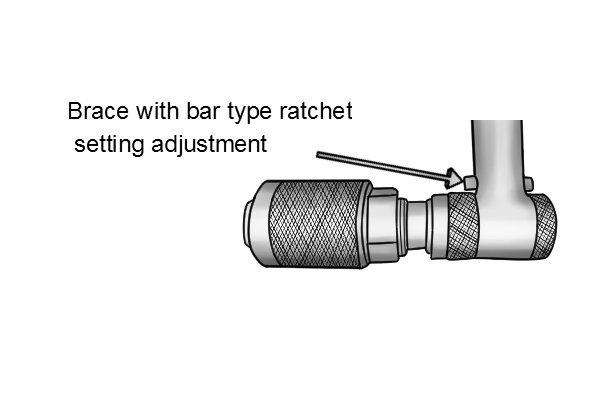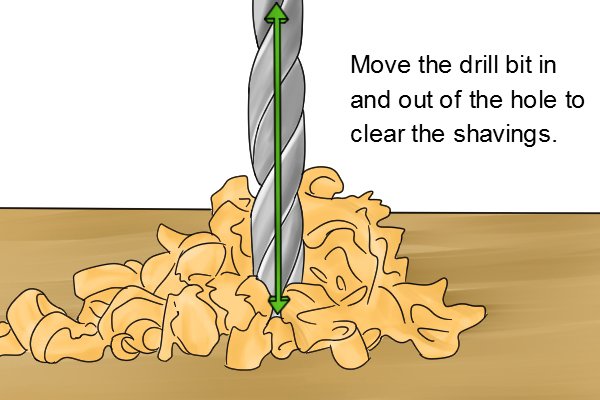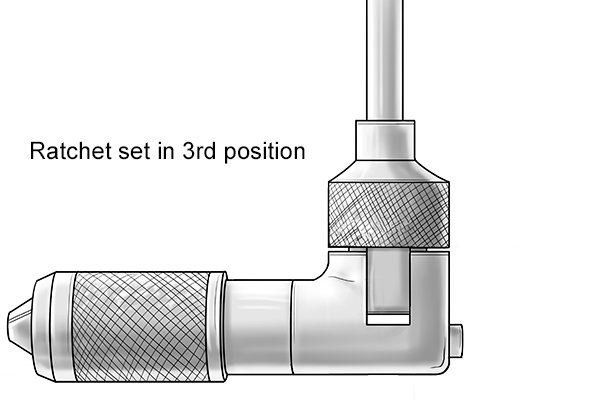
How to use a bracket?
Other equipment you may need | |
DeputyDepending on the size and shape of the workpiece, you may need a vise to hold it in place while you drill holes or drive screws. | |
 | chuckYou can use some clamps to hold the workpiece in place or two pieces together while you use the brace. |
 | Crafting tablePlacing the workpiece on a workbench can make it easier to drill or drive screws. |
 | Drill or headYou will need an appropriately sized drill bit for drilling holes or a socket head for driving screws. |
 | measuring deviceA measuring device such as a tape measure or ruler will be required to measure the correct position of the holes you wish to drill. |
 | Pencil or other marking toolA marking tool such as a pencil, scriber or scriber should be used with the measuring device to accurately mark the position where the screws or holes are to be placed. |
Use of parenthesis | |
 | Step 1 - Lay outBefore you start drilling or driving screws into your workpiece, you should always mark the position you want them to go in. Using your gauge and marking tool, measure the edges of the workpiece, placing marks where screws or holes are required. |
 | Step 2 - Secure BitRotate the chuck body counterclockwise to separate the jaws. |
 | Once the jaws are separated enough to accommodate the bit or bit, place the bit between them in the chuck. Then turn the chuck body clockwise to tighten the bit. |
 | Step 3 - Choose your ratchet settingIf your brace has a ratchet, you should now adjust it so that the brace only turns the bit in the direction you want. |
 | Ratchet cleats are usually installed by turning the ring just above the ratchet, or by moving the bar over the ratchet back or forth. |
 | If you have room for a full turn of the sweep handle, you should set the ratchet to the no-ratchet position. This will allow you to make full, smooth turns of the shackle, resulting in faster, more accurate drilling because the shackle is less likely to tilt in one direction. |
 | Set the ratchet so that the drill rotates only clockwise for drilling or screwdriving in tight spaces where you cannot make a full turn of the sweep handle. If you are using a screw removal bracket, set the ratchet so that the bit only rotates counterclockwise. |
 | Step 4 - Position the bracePlace the tip of the drill on the previously marked point on the workpiece. When drilling or driving screws into the workpiece, always try to position the drill bit at a 90° angle to the workpiece surface. This will reduce the chance of the bit slipping and sliding on the surface of the workpiece and damaging it. |
 | Step 5 - Hold the braceGrasp the handle of the brace with your dominant hand, as if you were holding a sword or an umbrella. Then place the palm of your other hand on the head of the brace. |
 | When drilling vertically with a clevis, use your non-dominant hand to push down on the bit. |
 | If you are drilling horizontally with a brace, the head of the brace can be placed against your chest so you can use your body weight to apply more pressure to the drill if needed. |
 | Step 6 - Turn the sweep handleOnce you have positioned the bail and held it correctly, turn the sweeping knob full turn if there is room to do so. This ensures that the drill rotates constantly and reduces the chance of it getting stuck in the hole being drilled. |
 | If you cannot make a full turn of the sweeping handle, turn the handle as far as possible before returning it to its original position and repeating the operation. Continue this back and forth motion and the ratchet will ensure that the drill only rotates in the direction you set. |
 | Step 7 - Remove the shavingsAs you drill, chips from the workpiece will form and rise out of the hole in the flutes of the drill. These chips can clog the flutes of the drill and create friction that causes the drill to heat up and expand. This can cause the drill to get stuck in the hole or even break if it is small. |
 | To prevent this from happening, you should remove the drill from the hole every few millimeters before inserting it back. While doing this, keep the drill rotating so that the chips continue to be removed. |

